As well as being editor, chief photographer and head washer-upper at WyeDean Deli Confidential I also, amongst other things, shoot travel pictures for an agency with offices around the world. Of course a significant part of capturing the spirit of any place is the local quality food and drink and the people that go with that. Markets particularly, so long neglected in England, seem to attract me like a moth to a bedroom light. So, having spent most of September in three regions (equivalent of UK counties) of Italy, I am feeling particularly spoilt! I know, it’s tough isn’t it – please don’t, sympathy isn’t good for my self-esteem…..
Call it the vino rosso, the sunshine or the total immersion in the language of love, but a very funny feeling struck me during that trip on more than one occasion – How similar to the countryside of Tuscany, Italy is the Forest of Dean & Wye Valley. OK, I know that the similarities do have some limitations but before you write me off as a hopeless romantic or a raging drunkard, let me try and convince you.
The hills around Bagni di Lucca and Seravezza are heavily wooded with broad leaved trees, most of which, Beech, Oak, Ash, Chestnut, would be easily recognisable to any DeanWye inhabitant, Although steeper that anything here, the mountains are home to and have a long history in, quarrying – marble in their case. The people are either typically conservative country people of those who have moved into the area because they too want to become “typical country people”. There is a real sense of community and local pride in the small towns and tiny villages. The countryside around the villages is teeming with natures larder. Then there’s the weather….sorry, it’s all too easy to get carried away with these comparisons. Apart from the last example, the parallel to the DeanWye is, in my estimation, very difficult to deny.
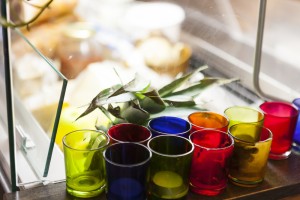
But, somehow they are very different. Firstly, September is the busiest time of year in the Italian wild mushroom season. Wild mushrooms are very important to Italians. No not the farmed ones; the wild ones. Chefs and restaurant owners all have their own mushroom men – fungaioli. Men who venture into the woods, on dark damp dusks and dawns to secret spots and locations whispered to them by their fathers father. They tend to be students of the natural world and lifelong woodsmen. Mushroom season is a prelude to Chestnut season which gets equal billing with the Italian countryside residents and, well, I think you get the picture. Much, much more on fungi later. Here, I’m not to sure many normal people even think about seasonal wild foods with any passion at all – why is that?
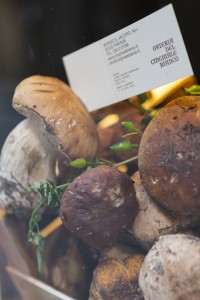
This natural food of the forest, like all other wild foods, is noble food in the Italian psyche. It’s tied up in the peasant and wartime partisan lifestyle ethos of eking a living from the land in the absence of anything else. But that ethos isn’t something that is obvious or even expressed. It is the taste and the earthy, nutty smell of the product which confers the nobility. On one lazy Sunday lunch sitting outside in the shade, I ordered Tagliatelle al Tartufo (black truffles) and I could smell my lunch as soon as it passed the kitchen door – heaven! It’s the sense of occasion that stems from the seasonality, passing of the seasons and the transition of one part of the year to another. It’s in the occasion that everyone can be involved in and enjoy. It’s in the added luxuriousness it brings to the already very simple, tasty and fabulous Italian food. And of course, this being Italy – it’s time for a festival on the subject where locals and visitors alike have the day off, drink a little wine and and eat very well indeed!

Forget the UK as a whole. Ask yourself why don’t we in the Forest of Dean & Wye Valley prize this wild local crop as highly? Why don’t we value the fabulous venison, boar and game? Why don’t we all go mad for the hedgerow berry bonanza? And why don’t we go wild foraging for wild salads and herbs? All of it is right there! It’s what makes our area so special and yet we lack the passion for it. Perhaps it’s because we have lost connection with the land itself, the growing of and the variety of food, unaffected by chemicals, drugs and fertilizers. Then ask yourself this; if we have in fact lost that wondrous adventure of first finding our food, or some part of a meal, before we eat it in favour of what we like to call convenience – is that convenient trade-off to our quality of life really worth it?
We stayed in Bagni di Lucca as a guest of Tuscan Rooms a remarkably beautiful four storey town house and former soda syphon factory in a previous life. The fully restored accommodation, complete with a real lift (extremely rare in Italian villages), vertiginous garden terrace and original four flights of marble staircase is ideally situated to explore the region. Right beside the river and in the heart of the lower town and distance walking to a great bar, a pasticceria and several restaurants, guests can rent a room, a floor or the whole shebang. Paul and Colette, the owners, will even pick you up from the airport by arrangement. If you would like to see some of the images from that trip visit my Travel gallery on Facebook
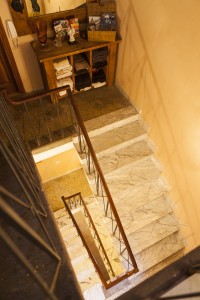
More mushroom-iness
If you regularly slip on obvious wet patches in the office lobby, don’t secure your ladders properly, don’t wear your seat belt or are constantly scolding your hands under the tap marked hot – this warning health is for YOU!
Some mushrooms are edible, delicious and good for you. Some are not. Some, no one knows if they are edible or not. Some need specific cooking preparation before eating and some can only be eaten in small quantities or the toxins build up in your body. IF, you have no idea which type of mushroom you have picked – don’t eat it. IF the jury is still out on which type of mushroom you have picked – don’t eat it. IF, you nevertheless go ahead and eat it anyway – please leave some of the raw ingredient in a convenient and obvious place for the para-medics to find or, as one eccentric mycologist did, write the scientific name in full on your hand in biro in the last remaining seconds before becoming comatose.
Fungaioli, skilled Italian mushroom hunters, gather mushrooms because they happen to know all about the habitat, natural and social history of a species from a collective experience of people like themselves. They tend not to be transient fungi hunters in it for the money between recorded episodes of “The Only Way is Essex”.
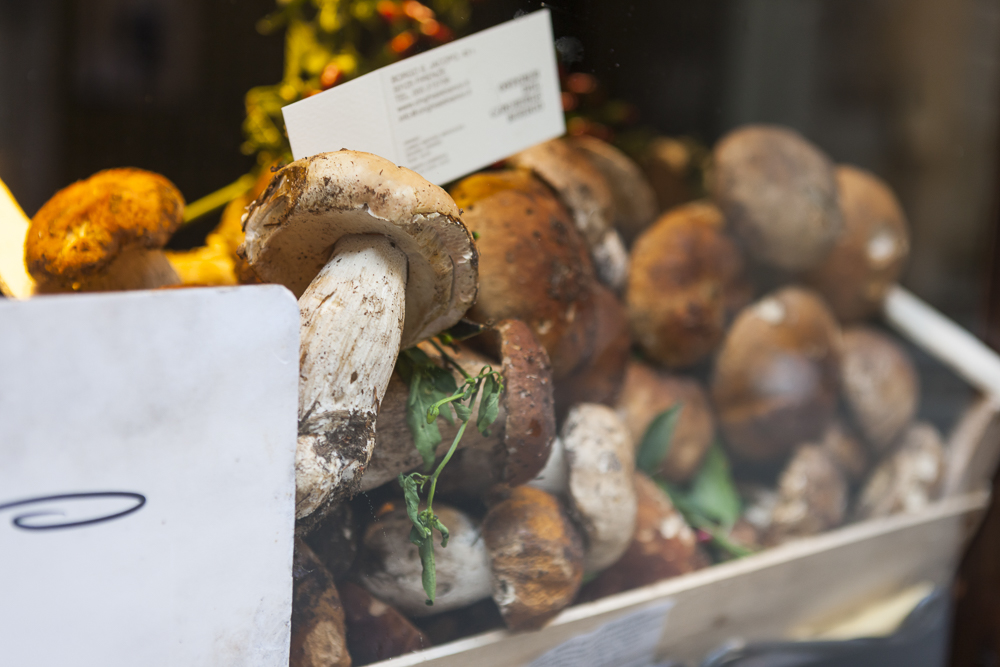
Fungaioli are also very savvy Fungus Sales Executives. They often deliver their treasure trove of truffley goodness in an attractive open topped wooden fruit box when the restaurant is open and full of customers just to ramp up the anticipation of the food obsessed Italians. Restaurant owners love this as it’s more likely that customers will return to THEIR restaurant for their autumnal fungus fix having seen the overflowing mushroom box come through the front door! Porcino (piglets in Italian) are the favourites amongst Italian chefs and restaurant customers alike. We know them by the common name of Cep but in fact, they are from a group more properly referred to as Boletus. With around 36 different Boletus in the British fungus list alone, most of which are edible, you start to see the sheer variety available and we haven’t even started on the Ink caps or the newly emerging Parasols!
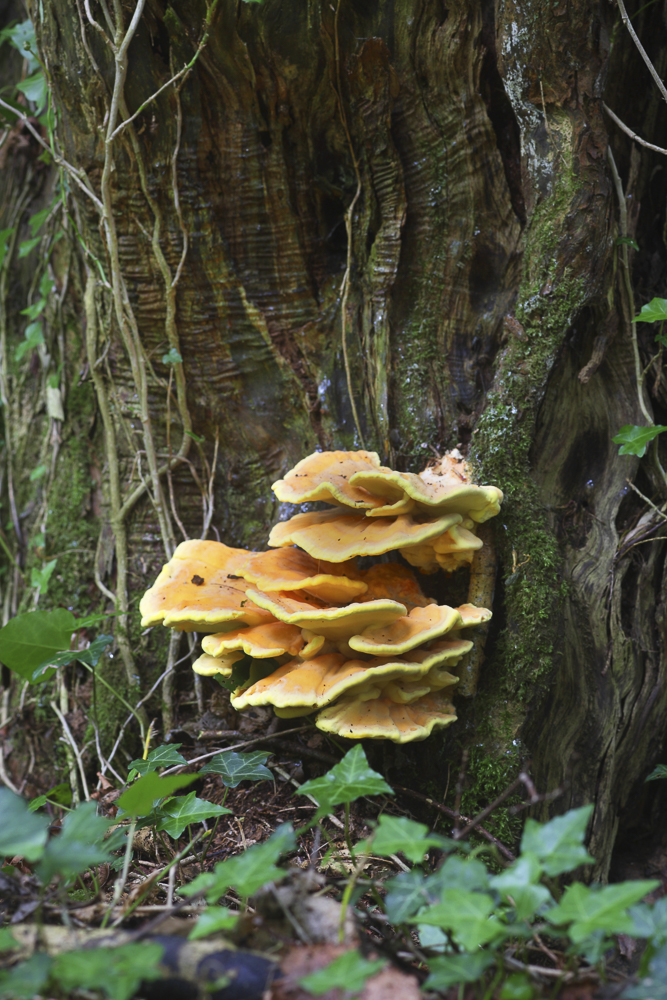
In the current Tesco magazine a passionate and no doubt very nice Managing Director of somewhere or other, reports delivering 5 tons of three varieties (one of them native to Asia) to Tesco of mushrooms a week – three varieties! In the Dean Wye we have another giant flavour of the wild mushroom world – Chanterelle – a soft egg yellow funnel shaped mushroom with an exquisite taste. In spring Morels with their honeycomb heads, grow under our apple tree! Another spring fruiting mushroom is Chicken of the Woods, delicious when young and fresh. The Germans and the Dutch love them! Parasols, mentioned earlier, are delicious and gloriously paper-white when cut, if picked very early. The text books will tell you that, although not poisonous, they can be very bitter once opened.
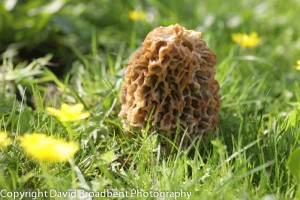
With a gay spirit of adventure I decided to test that assertion of bitterness and sliced one of the open caps (they are so large – small kids use them as parasols hence the name) before frying them in a little butter, I added parsley and a little black pepper just before serving and tried them. They looked fabulous but the text books are accurate and I pulled a muscle in my contorting face trying to get them out of my mouth as soon as possible.
Even if you can identify a specimen, the common names don’t always instil confidence. Take for example, Trombette dei Morti (Trumpets of the dead). This mushroom apes the shape of a black trumpet but its Halloweenesque name actually arose because it grows around the 2nd November, All Souls’ Day. It’s other common name of Truffles of the Poor hints at its widespread use once dried and powdered as a food additive because of its intense aroma.
If you are interested in learning more about mushrooms we can recommend the book Mushrooms by Roger Phillips. It has very helpful with, sometimes life-sized, images of each mushroom together with a useful information panel and notes on edibility.